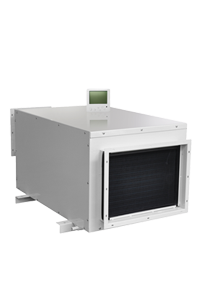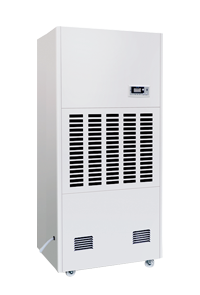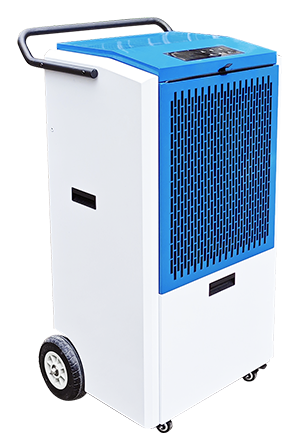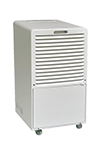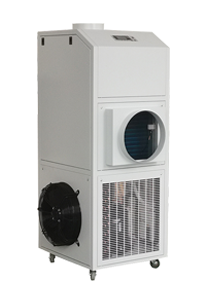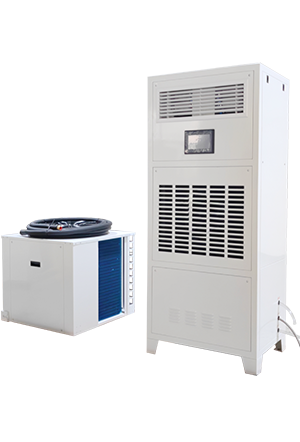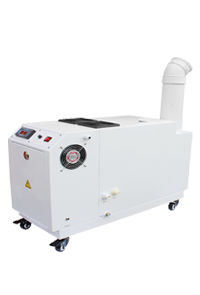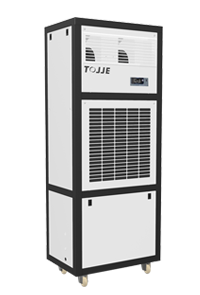News
Ceiling-mounted dehumidifiers can contribute to air purification indirectly by reducing humidity levels, which in turn inhibits the growth of mold, mildew, and dust mites—common triggers for allergies and respiratory problems. While dehumidifiers are primarily designed to control moisture, certain models come with additional air purification features, making them more effective in creating a healthier indoor environment.
How Ceiling-Mounted Dehumidifiers Help Purify Air:
-
Moisture Control:
- Reduction of Mold and Mildew: High humidity levels create an environment conducive to mold and mildew growth. Mold spores are harmful when inhaled, and a dehumidifier helps by keeping indoor humidity below the recommended 50%, preventing the spread of mold.
- Dust Mite Control: Dust mites thrive in moist environments. By reducing humidity, dehumidifiers make the air less hospitable to these allergens, improving overall air quality.
-
Integrated Air Filters:
- Many modern ceiling-mounted dehumidifiers come with built-in air filters. These filters can capture particles such as dust, pollen, pet dander, and other pollutants while the unit dehumidifies the air.
- HEPA Filters: Some units may even have HEPA (High-Efficiency Particulate Air) filters, which can trap 99.97% of airborne particles as small as 0.3 microns, offering advanced air purification.
-
Activated Carbon Filters:
- In addition to standard particle filtration, some dehumidifiers are equipped with activated carbon filters. These help to absorb and neutralize odors, smoke, and volatile organic compounds (VOCs), which contribute to indoor air pollution.
-
Continuous Air Circulation:
- Ceiling-mounted dehumidifiers often provide better air circulation because they are positioned overhead, allowing the air to flow more effectively throughout the room. This consistent airflow can help distribute the cleaner air more evenly across the space, contributing to improved indoor air quality.
-
UV-C Light Sterilization:
- Some advanced dehumidifiers come with ultraviolet (UV-C) light technology, which can kill airborne bacteria, viruses, and fungi by disrupting their DNA structure. This feature further enhances the air purification process.
Maintenance Tips for Maximum Air Purification:
-
Clean or Replace Filters Regularly: To ensure optimal air quality, clean or replace air filters according to the manufacturer’s guidelines. Clogged or dirty filters reduce the efficiency of both dehumidification and air purification.
-
Keep the Coils Clean: Dust and debris can accumulate on the dehumidifier coils, affecting both its performance and the air quality. Periodically clean the coils to maintain efficient operation.
-
Check for Proper Drainage: Ensure that the dehumidifier's drainage system is functioning correctly to avoid water accumulation, which can lead to mold growth within the unit.
-
Monitor Humidity Levels: Use a hygrometer to monitor indoor humidity. Ideal levels are between 30-50%, which is optimal for both comfort and air quality.
Applications:
- Basements and Attics: These areas are prone to high humidity and poor ventilation. Ceiling-mounted dehumidifiers can both reduce moisture and filter the air effectively in these spaces.
- Offices and Commercial Spaces: In commercial environments where high humidity can affect productivity and comfort, ceiling-mounted dehumidifiers with air purification features can improve both air quality and employee well-being.
- Kitchens and Bathrooms: These areas generate a lot of moisture, which can lead to mold growth. Installing a dehumidifier can help mitigate this while improving air cleanliness.
While ceiling-mounted dehumidifiers primarily serve to regulate humidity, models with additional filtration and sterilization options offer dual functionality, effectively purifying the air and creating a healthier indoor environment.

